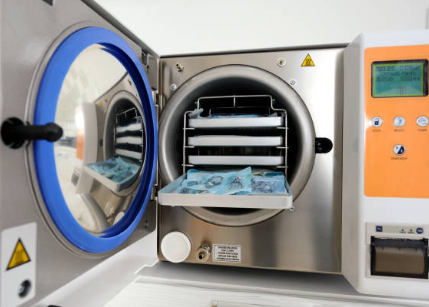Autoclave Safety

Autoclaves are used to sterilize materials and to decontaminate biomedical waste. Water, pressure, and heat are used to create a super heated steam that kills microorganism and spores. Under regulations from the Ministry of the Environment and the Public Health Agency of Canada, all biohazardous waste and contaminated materials (including Risk Group 1 organisms) must be decontaminated prior to disposal. Autoclaving is a simple and effective means of waste decontamination and sterilization.
Autoclave Safety
The autoclave is a pressure vessel that typically operates at a temperature of 121°C. Appropriate Personal Protective Equipment is tailored to the task based on a risk assessment. Such PPE may include, but is not limited to:
- Typical lab PPE (goggles, lab coat, closed toe shoes)
- Heat resistant long-cuff gloves
- Face Shield
- Rubber aprons
Autoclave Cycle Verification
Periodic testing as per an Autoclave Verification Procedure must be conducted to verify the autoclave’s efficacy. These tests and results are recorded in the Verification Testing Table log sheet and kept for 5 years.
Autoclave Training
The University’s Health and Safety Policy strives to…
“…ensure the health and safety of all students, staff, faculty and visitors – in all University facilities, at all University functions and in all University sponsored programs”
Before an individual uses an autoclave they must first receive training on the proper and safe use (including loading and unloading) in order to prevent injuries and to ensure effective decontamination/sterilization. This training is a two part process;
- Practical, equipment specific training to be provided by the supervisor.
- Autoclave safety training is coming soon to CULearn! Stay tuned.
There are numerous factors to consider when determining the correct autoclave cycle (e.g. material, volume, position within chamber….). These and more are discussed in the Carleton Autoclave Use Guidelines.
Upcoming Sessions
No event posts are available.